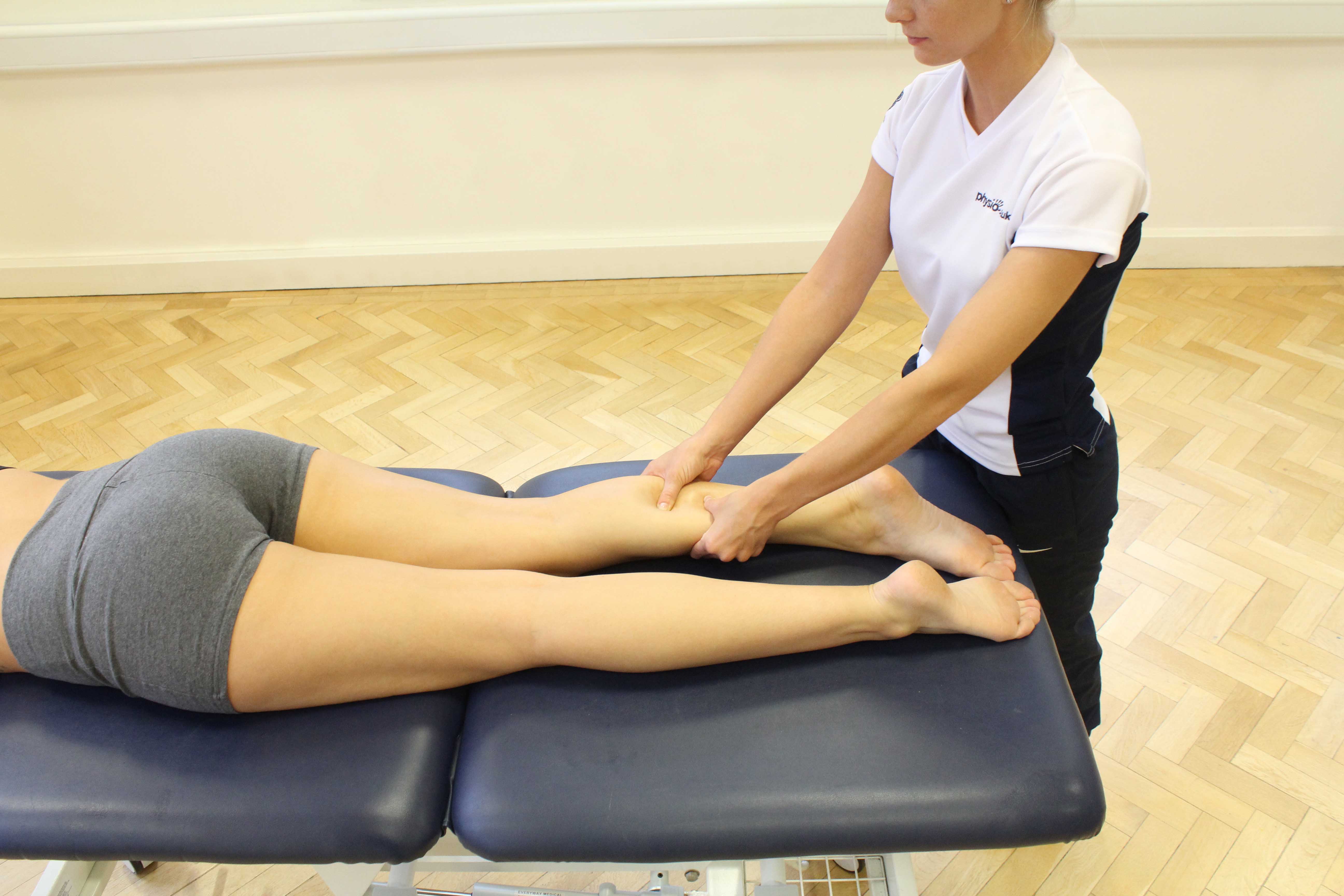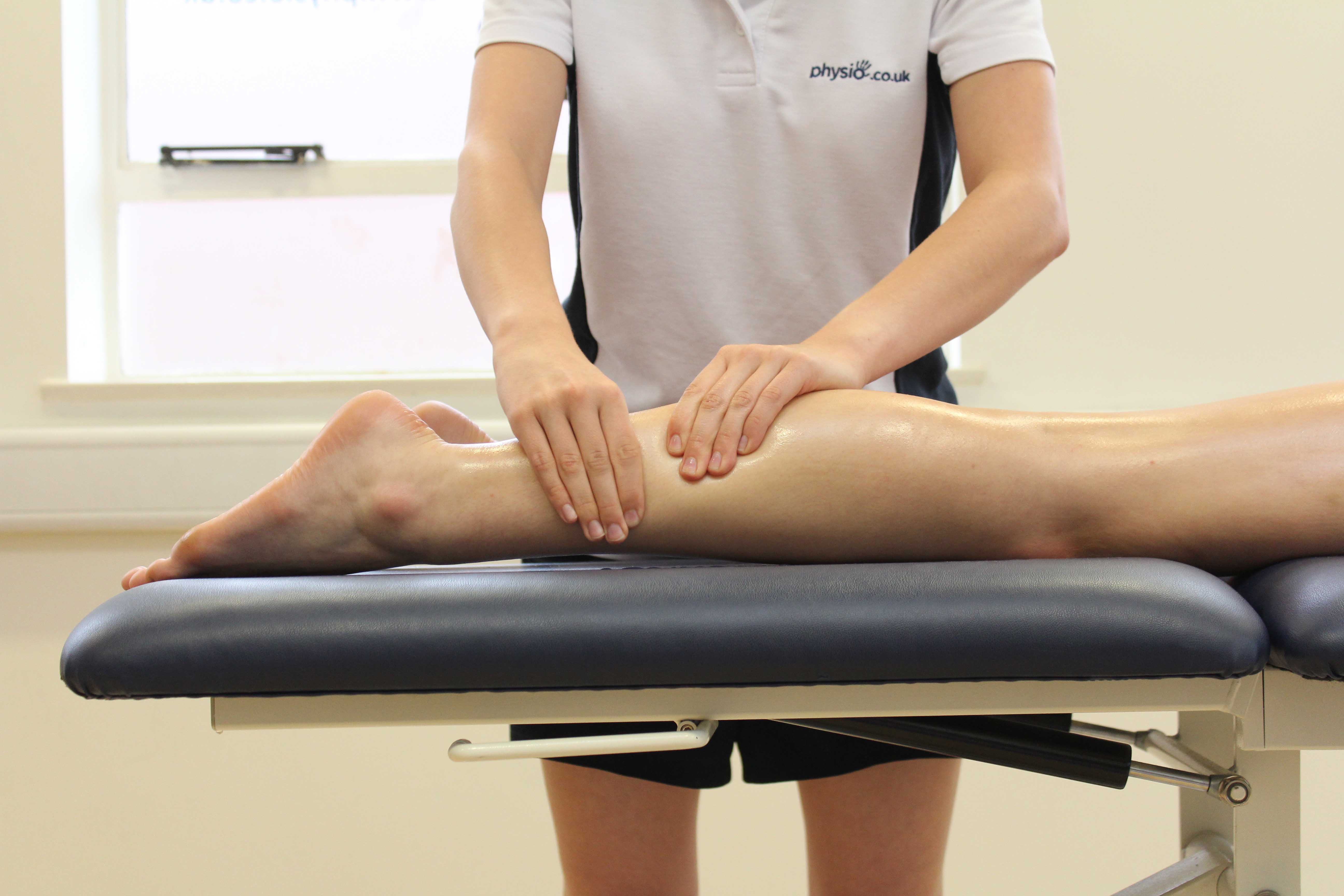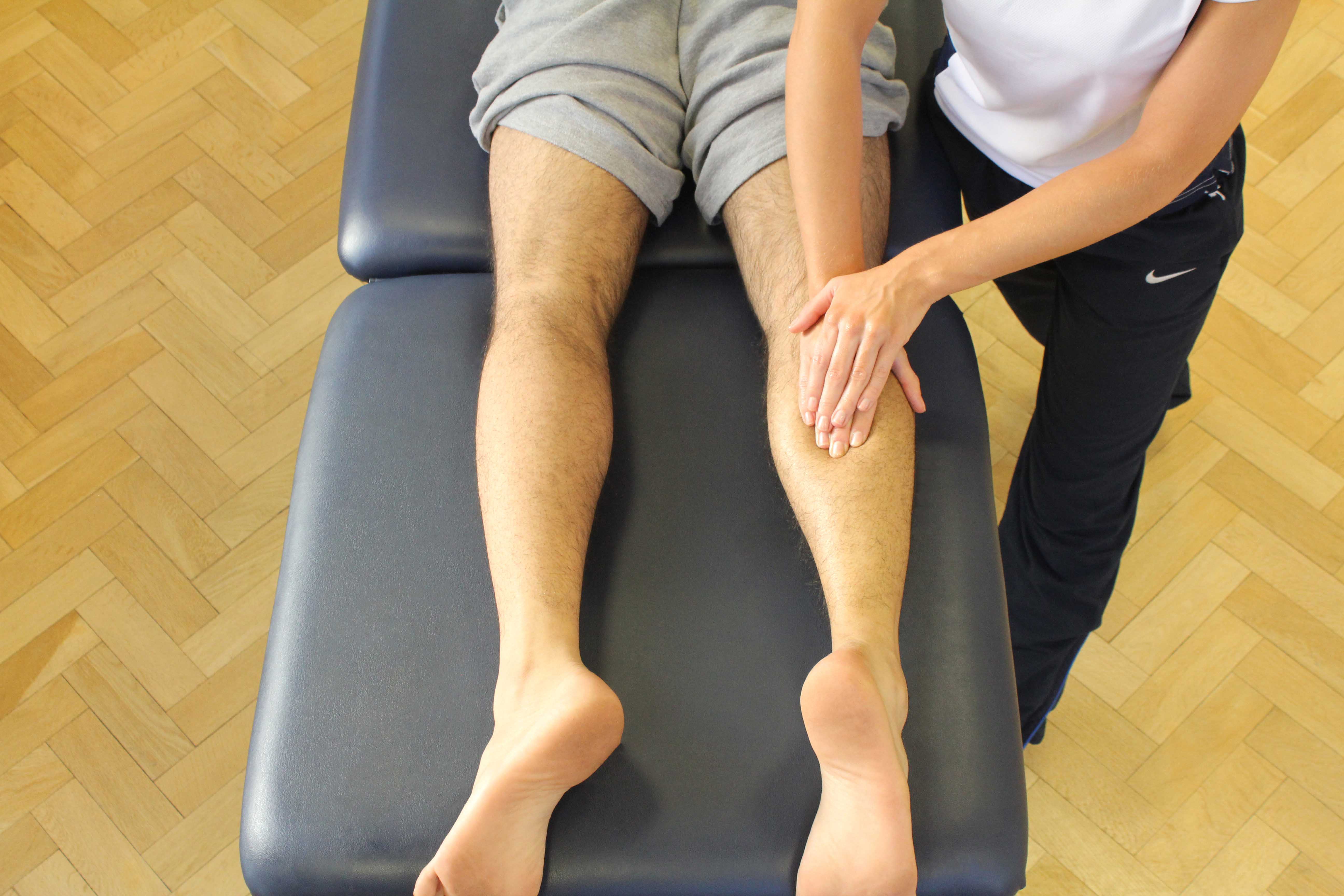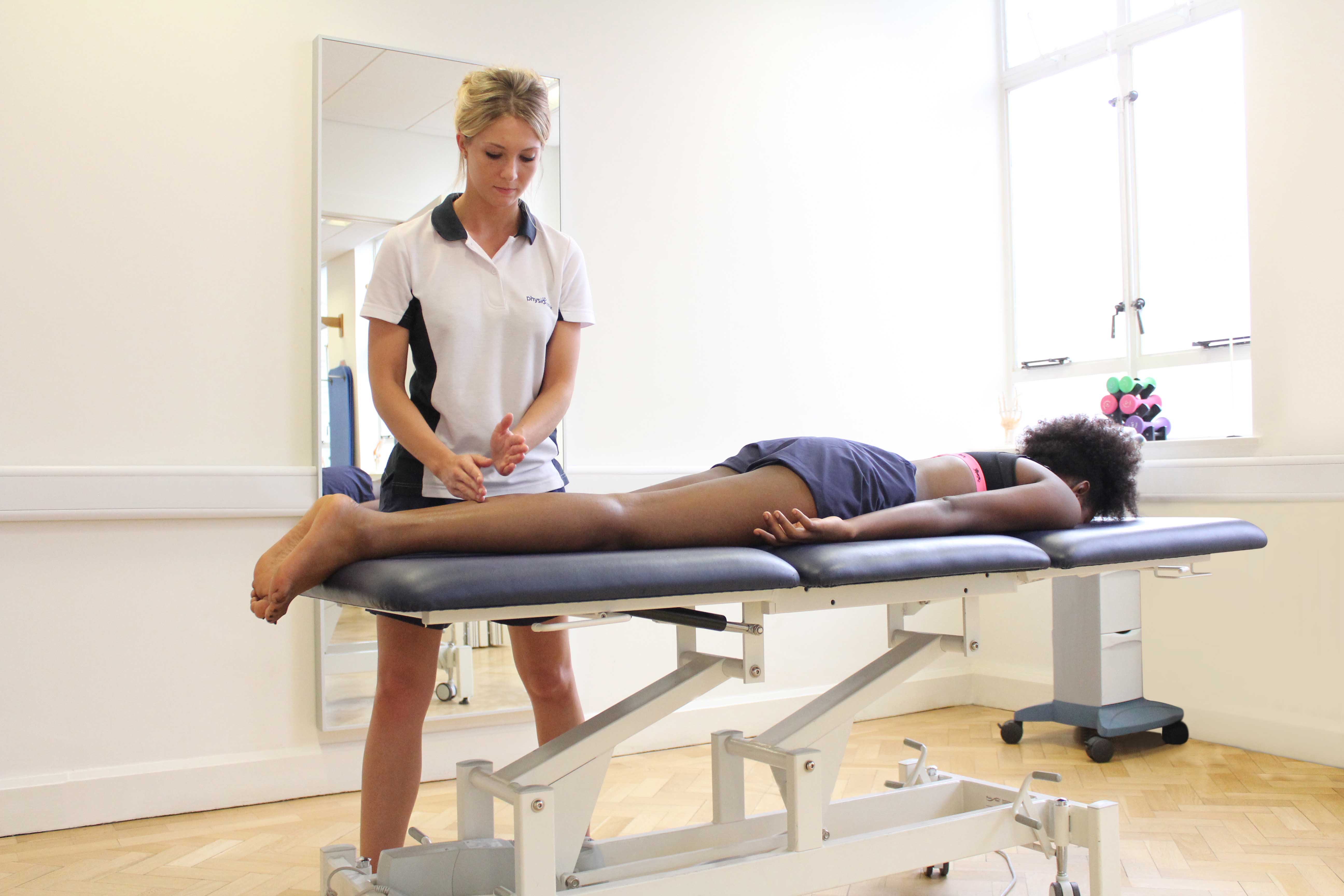Tibial torsion refers to the twist in the tibia bone (shin bone), which causes the knee and ankle to not line up properly, resulting in the feet pointing in or out. Tibial torsion occurs primarily in growing children when they walk with an in-toeing or out-toeing step. Tibial torsion is believed to be caused by a variety of genetic factors as well as how the foetus was positioned inside the uterus before birth. Other common reasons that cause tibial torsion include neurological disorders such as cerebral palsy where the muscles become tight causing the bones to develop in a twisted position.
The main symptoms seen as a result of tibial torsion include the child walking abnormally with their toes pointing in or out as they walk. The child may suffer from recurrent trips or falls. Tibial torsion rarely causes any pain but may cause problems later on in life such as arthritis. In many cases the problem corrects itself over time, but where correction doesn’t occur, tibial derotation and osteotomy surgery is required.
Tibial derotation and osteotomy surgery is performed under general anaesthesia. The surgeon firstly makes a small stab-like incision just above the ankle. Tibial derotation and osteotomy surgery involves intentionally cracking the tibia (shin bone) and the fibula (smaller bone in lower leg) usually just above the ankle. This is then followed by rotating the bone into proper alignment. Cracking is a surgically induced fracture where the bone is weakened by drilling numerous holes into the bone. This is termed as osteotomy surgery. The bone is the fixed into position using screws, pins, plates or a combination of the three. Once the malalignment has been corrected in this way, the wound is closed using stitches or sutures.
Tibial derotation and osteotomy surgery is essential in cases where tibial torsion has not corrected on its own. The surgery corrects the malalignment, improves walking, reduces pain (if any) and prevents problems caused by tibial torsion in the future. Following tibial derotation and osteotomy surgery it is imperative to undergo a comprehensive and prolonged course of physiotherapy to maximise the success of the procedure and to help ensure the correction of function in the lower legs in the future.
 Above: Trigger point massage of the gastrocnemius muscle
Above: Trigger point massage of the gastrocnemius musclePhysiotherapy prior to tibial derotation and osteotomy surgery
Physiotherapy is recommended before your child undergoes tibial derotation and osteotomy surgery. The main aim of physiotherapy prior to your child’s surgery is to better prepare their lower leg / legs for the surgery. Physio.co.uk offers a comprehensive physiotherapy programme that focuses on strengthening the muscles of your child’s lower limbs and improving the range of movement they have as much as possible before their tibial derotation and osteotomy surgery. Your child’s physiotherapy prior to their tibial derotation and osteotomy surgery will also include activities that help improve cardiovascular fitness and muscle endurance to further prepare your child for the surgery.
Symptoms after tibial derotation and osteotomy surgery
Your child will be placed in a cast immediately after the surgery. Their lower leg will be immobilised in the cast for 6-8 weeks. The length of time their leg will be immobilised depends on how well the tibia has healed in its redirected position. Your child will experience some pain after the surgery but this can be controlled by painkillers. Your child will not be able to walk immediately after the surgery and they will be given a walking aid such as elbow crutches or a walker. Physiotherapy will start immediately after the operation to enable your child to walk as soon as possible in the cast. When the cast is removed the physiotherapy can continue with more difficult and more functional activities. Your child will need regular checkups after they have been discharged. Recovery can take up to 4 months after tibial derotation and osteotomy surgery.
 Above: Rolling soft tissue massage of the gastrocnemius muscle
Above: Rolling soft tissue massage of the gastrocnemius musclePhysiotherapy after tibial derotation and osteotomy surgery
Physiotherapy after tibial derotation and osteotomy surgery is essential to maximise the success of the surgery, prevent the likelihood of any problems occurring in the future and help your child achieve the return of full or near to full function in their affected lower limbs. Physiotherapy immediately after your child’s surgery will begin by helping them to walk as much as possible in the cast. When the cast is removed, physiotherapy will continue and will now aim to reduce pain, improve strength and re-train gait (correct walking). Rehabilitation may take up to 4 months. Physio.co.uk will provide a comprehensive physiotherapy that is personal to your child with the main goals including:
- To facilitate correct function in affected lower leg
- To minimise pain post surgery
- To restore full range of motion (ROM)
- To restore full muscle strength
- To restore full muscle length and flexibility
- To improve cardiovascular fitness and muscle endurance
- To re-train gait (correct walking)
 Above: Soft tissue massage of the gastrocnemius muscle by MSK therapist
Above: Soft tissue massage of the gastrocnemius muscle by MSK therapist1-4 weeks
In the initial few weeks after your child’s tibial derotation and osteotomy surgery they will have a cast on their affected leg / legs. At this stage, your physiotherapy with Physio.co.uk will aim to minimise your child’s pain, maintain their range of motion and encourage mobility. The main goal of rehabilitation with Physio.co.uk will be to encourage walking as soon as possible after your child’s tibial rotation and osteotomy surgery. Your child’s physiotherapy will include:
- Pain control
- Non weight bearing activities
- Weight bearing activities
- Passive (assisted) range of movement exercises
- Active (on your own) range of movement exercises
- Gait re-training (walking)
 Above: Hacking percusion massage applied to the gastrocnemius muscle
Above: Hacking percusion massage applied to the gastrocnemius muscle5-8weeks
In the second month of recovery, the cast will have now been removed and the intensity of your child’s physiotherapy programme can be gradually increased. The physiotherapy programme will now aim to continue controlling any pain and swelling your child may be experiencing at this time. Physio.co.uk will focus on improving range of movement and flexibility along with increasing muscle strength and control. Now that the cast has been removed, emphasis of the rehabilitation will be on re-training your child’s gait which is their ability to walk correctly and without turning their lower leg inwards or outwards. Your child’s physiotherapy will include:
- Pain control
- Compression and elevation (swelling and circulation)
- Passive and active range of movement exercises
- Stretching and flexibility exercises for muscles in affected lower limb (hamstrings, calf muscles, tibialis anterior, quadriceps)
- Strengthening exercises for muscles in affected lower limb (hamstrings, calf muscles, tibialis anterior, quadriceps)
- Gait retraining (correct walking)
- Proprioception training (balance)
- Hydrotherapy (cardiovascular)
9-12 weeks
In the third month of rehabilitation your child’s physiotherapy programme will continue to focus on the progression from previous weeks. The main goals of your child’s physiotherapy programme with Physio.co.uk will aim to minimise pain, improve range of movement, increase strength, re-train their gait and improve proprioception (balance). At this stage, your child’s physiotherapy will also begin to include activities that will help improve their cardiovascular fitness and muscle endurance to enhance recovery and wellbeing. Your child’s physiotherapy will include:
- Pain control
- Gait training (walking)
- Proprioception training (balance)
- Range of movement exercises
- Flexibility exercises
- Strengthening exercises for muscles in affected and unaffected leg (calf, hamstring, quadriceps, tibialis anterior etc)
- Hydrotherapy
- Static bicycle
3 months onwards
After three months of successful physiotherapy with Physio.co.uk you will have seen marked improvements in regards to function and strength in your child’s lower legs. Your child’s physiotherapy will continue to focus on progression of activities from previous weeks. Along with continued emphasis on re-training your child’s gait, physiotherapy with Physio.co.uk will now gear more towards improving your child’s cardiovascular fitness as well as including more functional activities that are implemented based on your child’s hobbies and everyday tasks. Your child’s physiotherapy will include:
- Gait training (walking)
- Proprioception training (balance)
- Range of movement exercises
- Flexibility exercises
- Strengthening exercises for muscles in affected and unaffected leg (calf, hamstring, quadriceps, tibialis anterior etc)
- Hydrotherapy
- Static bicycle
- Jogging
Summary
Tibial derotation and osteotomy surgery is a surgical procedure to correct the alignment of the lower leg that is often required to treat tibial torsion. Tibial torsion is a condition where the tibia (shin bone) is rotated inwardly or outwardly causing problems with function in the lower leg, such as walking. Tibial torsion mainly affects children and in some cases can be as a result of a neurological disorder such as cerebral palsy. Tibial derotation and osteotomy surgery involves cracking and then rotating the tibia (shin bone) and the fibula (smaller bone in lower leg) to correct its alignment. The bone is then fixed in its correct position using pins or screws. Physiotherapy after tibial derotation and osteotomy surgery is important to ensure the success of the surgery, reduce pain and stiffness, aid the healing process and improve gait (walking) and function in the lower leg. A personal physiotherapy programme with Physio.co.uk will help your child achieve new and improved function in your child’s leg / legs. Call Physio.co.uk now on 0330 088 7800 for more information or to book an appointment please contact us.

 0330 088 7800
0330 088 7800





































